Ethernet Is Slower Than Wi-Fi? 7 Troubleshooting Tips For You
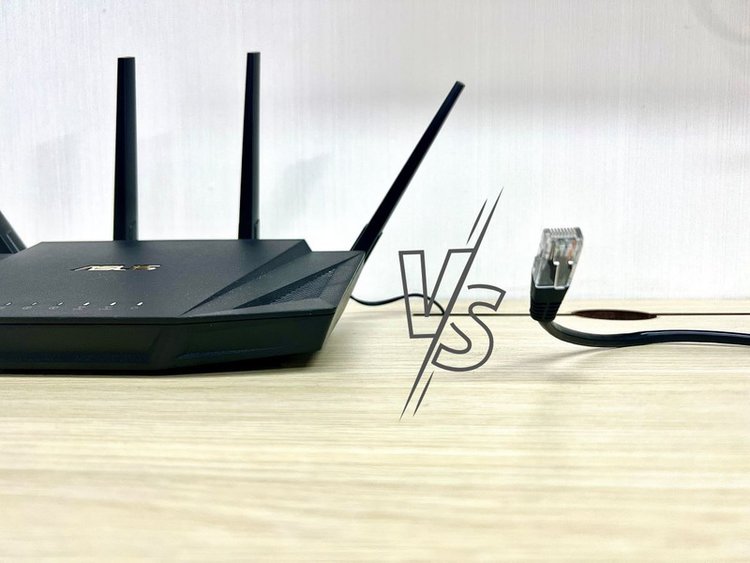
Solutions To Try
- A simple restart of both your devices (like smart TV and computer) and modem/router can resolve lagging issues by rebooting the system and refreshing the network connection.
- Outdated software on devices and routers can slow down Ethernet speeds. Regularly check and install updates for your smart TV, computer, and router to maintain optimal performance and security.
- Faulty Ethernet ports or damaged cables can hinder connection speeds. Clean ports, try different ports on the router, and inspect cables for damage.
In this guide, I will unravel the mystery of why your Ethernet connection might be underperforming compared to Wi-Fi and provide straightforward solutions to boost your wired network’s speed.
If you’ve been puzzled by slower-than-expected Ethernet speeds, let’s explore practical fixes together to get your connection running at its full potential.
Let’s begin.
Quick Navigation
Ethernet Should Be Faster Than Wi-Fi
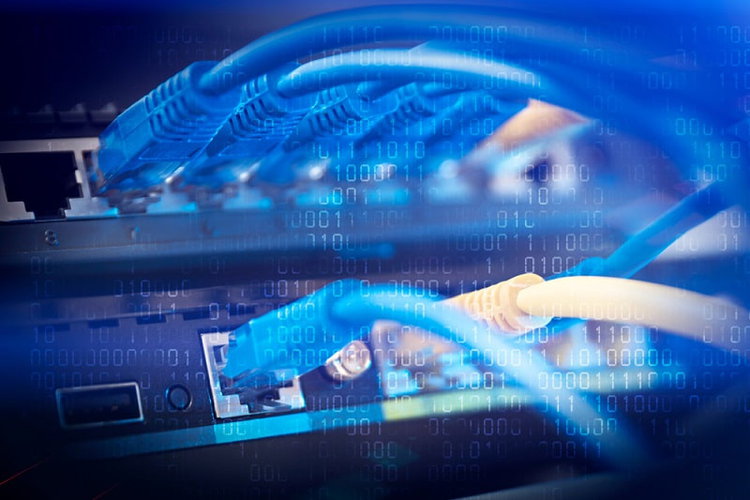
Most Ethernet cables boast a transfer speed of 10Gbps and higher.
On the other hand, Wi-Fi speeds can theoretically only reach a maximum of 6.9Gbps. However, in reality, its speed rarely surpasses 1Gbps.
Test your internet speed by heading to websites like FAST or Speed Test.
Additionally, since Wi-Fi is wireless, it tends to be more prone to interference and signal loss than its wired counterpart, Ethernet. This is especially true if the signal is further weakened by distance and signal-blocking obstructions, such as concrete and metal objects that absorb the signal.
Meanwhile, since Ethernet connections travel through wires, they tend to foster more stable connections since the signal is secure and won’t weaken over long distances.
How to Troubleshoot When Ethernet Is Slower Than Wi-Fi?
So, now that you understand why Wi-Fi is inherently slower than Ethernet, it’s time to investigate why your Ethernet signal may be slower than Wi-Fi. Although uncommon, Ethernet is also prone to lagging if there are any software or hardware discrepancies.
1. Restart Your Device and Modem/Router
Your device and modem/router may be lagging if they’ve been left on and in constant use for an extended period. So, it’s best to restart it to give the software an opportunity to reboot.
Let’s learn how to restart your router, computer, and smart TV.
Smart TV
Step 1: Ensure your TV is turned on before unplugging its power cable.
Step 2: Wait 30 seconds or more.
Step 3: Plug the TV into power and turn it on once more.
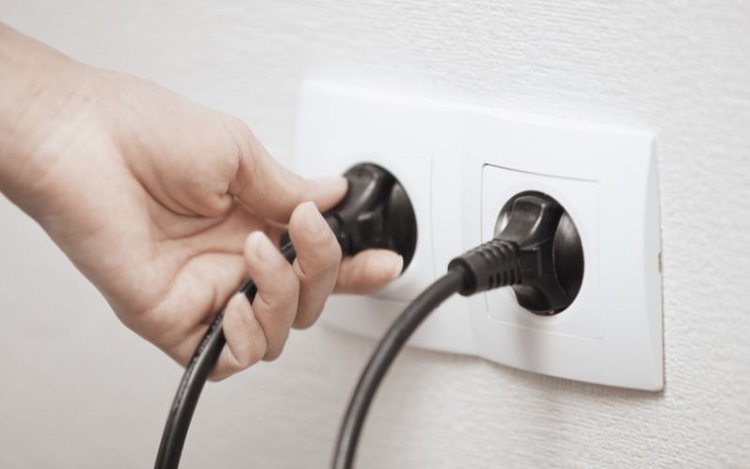
Computer
Windows
Step 1: Launch the Start menu.
Step 2: Head to the Power option.
Step 3: Click on Restart.
macOS
Step 1: Open the Apple menu.
Step 2: Scroll down and click on Restart…
Router/Modem
Step 1: Turn your modem/router off if it has a power button.
Step 2: Unplug its power cable.
Step 3: Wait for at least 20 seconds.
Step 4: Connect the power cable to the wall outlet.
Step 5: If possible, turn the router on with its power button.
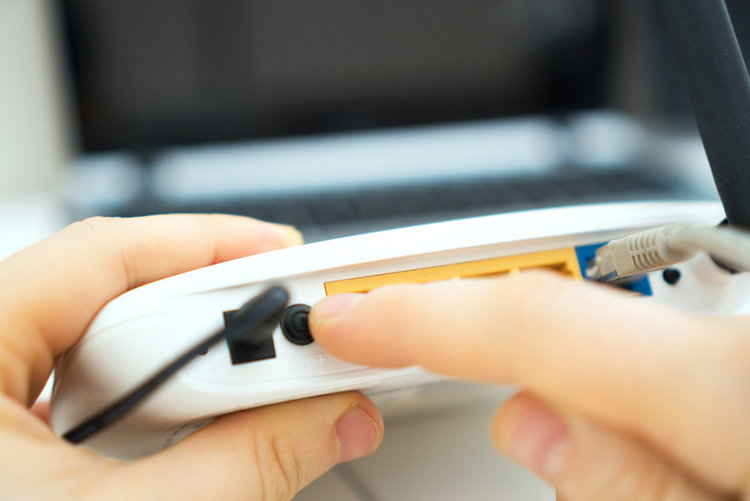
Note: Many routers feature a Reset pinhole, which can be activated by sticking a pointy object into it. This pinhole will hard reset your router, resetting its network configuration, SSID, and password. So, do not activate this pinhole unless you are prepared to set up your router from scratch.
2. Update Your Devices
Your smart TV, computer, and/or router may have some pending updates slowing down their signals. Installing updates on your devices will also ensure they’re running the latest firmware/software versions and security protocols.
Smart TV
Let’s learn how to update a Samsung, Sony, TCL, and LG smart TV.
Samsung
Step 1: Go to Menu.
Step 2: Head to Settings.
Step 3: Click on Support.
Step 4: Open Software Update.
Step 5: Click Update Now.
Sony
Step 1: Hit your remote’s Quick Settings button, marked with a gear icon.
Step 2: Go to Settings.
Step 3: Click on System.
Step 4: Navigate to About.
Step 5: Head to System software update.
Step 6: Navigate to the right of the screen and click Software update.
Watch the video below on how to update a Sony TV
TCL
Step 1: Launch the Settings menu on the Home page.
Step 2: Navigate to More Settings.
Step 3: Go to Device Preferences.
Step 4: Head to About.
Step 5: Click on System Update.
Step 6: Then, click on Network Update, followed by OK.
LG
Step 1: Launch the Settings.
Step 2: Head to All Settings.
Step 3: Open Support.
Step 4: Go to Software Update.
Step 5: Click on Check for Updates.
Step 6: If available, click Download and Install.
Watch the video below on how to update a LG TV
Computer
To ensure your computer is up-to-date, you must check for and install any driver and software updates.
Follow the instructions to update a Windows 10 and 11 PC, and a macOS computer.
Windows 10 PC
Software Update:
Step 1: Head to the Start menu, marked by a Windows icon.
Step 2: Go to Settings.
Step 3: Open Update and Security.
Step 4: Click on Windows Update.
Step 5: Click on Check for Updates.
Driver Update:
Step 1: On the Windows Update page, click on View optional updates.
Step 2: Go to Driver Updates.
Step 3: Click on each driver to update it.
Step 4: Click on Download and Install.
Windows 11 PC
Software Update:
Step 1: Navigate to Start.
Start 2: Head to Settings.
Step 3: Go to Windows Update.
Step 4: Head to Check for Updates.
Driver Update:
Step 1: Under Windows Update, click on Advanced Options.
Step 2: Head to Optional Updates.
Step 3: Go to Driver Updates.
Step 4: Select all of the drivers.
Step 5: Click Download and Install.
macOS
Step 1: In the top-left corner of your screen, launch the Apple menu.
Step 2: Go to System Preferences.
Step 3: Head to Software Update.
Step 4: Click Update Now if there are any new updates to install.
If your Mac has different settings, check out the article Update macOS on Mac for alternate instructions.
Watch the video below on how to update macOS
Router/Modem
Did you know that routers/modems need to be updated too? It’s true!
To update your router’s firmware or software, you will need to access its web management page by inputting its IP address into a browser’s URL bar.
While this process isn’t difficult, it is slightly more involved than updating a smart TV or computer.
Luckily, HP’s article How to Update Router Firmware clearly outlines all of the necessary instructions for most popular router brands.
If you’re a visual learner, you can also learn how to update your router by watching the video below.
3. Scan Your PC for Viruses
Viruses and malware can affect your network settings, causing significant delays in the signal’s speed. Additionally, the malware could be gathering your personal information, like credit card details and passwords, putting your cyber security at risk.
You may also notice that your computer is running a lot slower than usual since the virus is negatively affecting its software.
Luckily, Windows PCs have a built-in Windows Security scan feature, which detects and removes any malicious code.
This process is the same for both Windows 10 and 11 PCs.
Step 1: Click the Windows icon to open the Start menu.
Step 2: Select the search bar and type “Windows Security” into it. Then, press the Enter key to search for it.
Step 3: Click on Windows Security from the search results.
Step 4: Go to Virus and threat protection.
Step 5: Go to Scan Options.
Step 6: Click on Full Scan.
Step 7: Select Scan Now.
For more information about Windows Security, what it is, and how to use it, check out the article Stay protected with Windows Security.
4. Check Your Applications
Certain apps like VPNs, and third-party anti-viruses and diagnostic tools can interfere with your network settings and slow your internet connection.
This is particularly true for VPNs since they reroute your data through a server before it arrives to your device.
So, to ensure you’re getting the fastest signal possible, it’s best to temporarily disable them or remove them completely.
Follow the instructions below to uninstall an app on Windows and macOS.
Windows
Step 1: Go to Start.
Step 2: Click on All apps.
Step 3: Find the app you want to remove.
Step 4: Once you’ve found the app, right-click on it to reveal a pop-up menu.
Step 5: Click on Uninstall from this pop-up menu.
macOS
Step 1: Launch the Finder app.
Step 2: Navigate to Applications.
Step 3: Hold and drag the app you want to delete to the Trash. If prompted, enter your computer’s login password.
Step 4: Empty the Trash by clicking on with two fingers on your trackpad. Then, select Empty Bin.
5. Try Using Another Ethernet Port or Cable
Your router’s Ethernet port may be faulty, resulting in a weak connection. So, unplug your Ethernet cable and check its port for any dust or debris. If the port is dirty, unplug your router from power before cleaning it with compressed air. Then, plug the Ethernet cable back into it.
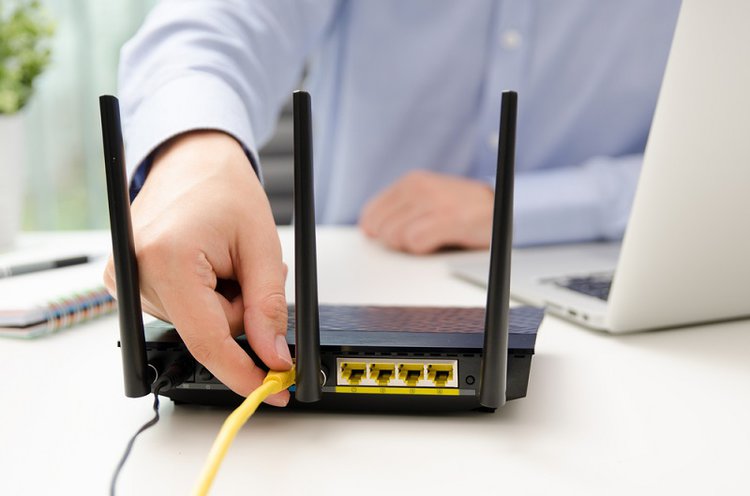
If nothing changes, try plugging the Ethernet cable into another one of your router’s Ethernet ports to see if that helps.
Ethernet cables must be in good condition to ensure a speedy connection. So, check if your cable is worn, torn, or bent. If you have any pets or small children, be mindful of placing the cable within their reach, since they may have pulled or chewed on it.
Also, inspect the cable’s connector, ensuring none of its pins are missing.
If possible, try using another cable if you have a spare lying around your home. Many internet providers include an Ethernet cable in the router’s packaging, so check there before trying to order one online.
Your Ethernet cable may be incompatible with your router. So, it’s a good idea to purchase an upgrade and see if that makes a difference.
Make sure you’re using at least a Cat 5e or Cat 6 Ethernet cable as these will foster the fastest connections.
6. Factory Reset Your Devices
Something may be wrong with your device’s settings. This could be a result of an app you’ve installed or any settings you’ve adjusted.
Whatever the reason, it’s a good idea to factory reset your device if none of the above solutions have resolved your connectivity problems.
Bear in mind that factory resetting your device will delete all of its files and apps. So, ensure you’ve backed up all of your files on the Cloud or have copied them to a hard drive.
Follow the steps listed below to factory reset your smart TV or computer.
Smart TV
Let’s learn how to factory reset a smart TV from Samsung, Sony, TCL, and LG.
Samsung
Step 1: Go to the Settings.
Step 2: Open Support.
Step 3: Go to Self Diagnosis.
Step 4: Select Reset.
Note: If prompted for a passcode, enter the default PIN: 0000
Sony
Step 1: Hit the Quick Settings button, which looks like a gear, on your remote.
Step 2: On-screen, navigate to the gear icon to launch the Settings.
Step 3: Go to System and then About. Alternatively, you may need to select Device Preferences.
Step 4: Head to Reset.
Step 5: Click on Factory data reset.
Step 6: Select Erase everything.
Step 7: When a confirmation message appears on-screen, click Yes.
Watch the video below on how to factory reset a Sony TV
TCL
Step 1: Click your remote’s Settings button.
Step 2: Go to More Settings.
Step 3: Launch Device Preferences.
Step 4: Click on Reset.
Step 5: Go to Factory Data Reset.
Step 6: Click on Erase Everything.
Step 7: Then, your TV will ask for a PIN. If you’ve set your own PIN, type it into the pop-up window now. Otherwise, enter the default PIN: 1234
Step 8: Select OK.
Watch the video below on how to Factory Reset the TCL TV
LG
Step 1: Press the Smart button, marked by an icon of a house.
Step 2: Launch the Settings by selecting the cog icon.
Step 3: Navigate to General.
Step 4: Select Reset to Initial Settings.
Computer
Let’s learn how to factory reset a Windows 10, Windows 11, and macOS computer.
Windows 10
Step 1: Open Start.
Step 2: Click on Settings.
Step 3: Head to Update and Security.
Step 4: Open Recovery.
Step 5: Click on Get Started under Reset this PC.
Windows 11
Step 1: Launch the Start window.
Step 2: Open Settings.
Step 3: Go to System.
Step 4: Click on Recovery.
Step 5: Select Reset PC.
Step 6: Then, click on Reset PC once more.
macOS (Monterey)
Step 1: Click on the Apple menu.
Step 2: Open System Preferences.
Step 3: Then, click on Erase All Content and Settings.
If this option isn’t available on your Mac or if you’re currently using macOS Ventura, check out Erase your Mac and reset it to factory settings for a complete guide on factory resetting your Mac.
7. Contact Your ISP or the Router’s Manufacturer
You’ve tried all of the above solutions and have even factory reset your computer, but your internet connection is still slow.
What should you try next?
It’s time to contact your ISP and inform them of your ongoing connectivity problems. There could be something wrong with your router/modem and it may be in need of replacement.
Depending on your provider and warranty policy, your ISP may replace your router for free. Otherwise, you may have to pay for any upgrades out of pocket.
Good luck!
Yesenia Achlim is a technical copywriter and editor with a focus on AV equipment. She aims to break down complicated topics and make technology accessible, no matter your technical expertise. When she’s not teaching you how to replace a projector lamp, you can find her reading and baking.

